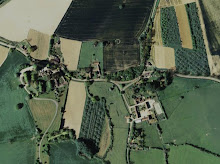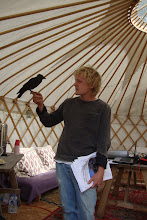
This morning I went out into the orchards with my neighbour Andy (pictured above) to survey potential bat roosts. Andy is an ecological consultant and bat enthusiast and has an endoscope for looking into cavities. I had previously located 6 likely looking cavities where there were openings into upwards slanting internal spaces so we went and checked them out...


There are seventeen species of bat in the UK, and 3/4 of these can use trees as roosting sites, each with their own different preferences. They generally prefer roosts that are dark, fairly well insulated, dry, quite humid and away from potential predators such as rats. Finding summer tree roosts is very difficult in places like Gloucestershire due to the number of trees and the fact that buildings often provide more suitable sites. Common pipistrelle (Pipistrellus pipistrellus) is the commonest British bat and the most likely species for the orchard to have as a resident.


Andy using the endoscope to inspect a cavity in the 1920's orchard. Promising potential roosts had very little cobwebs across the entrance or inside as the presence of these is both a deterrent to bats and indicates that the hole hasn't had any animal traffic passing through. Droppings are another giveaway. Sadly we did not find any bats in the trees, but there is great potential for some of the hollow limbs to be used either infrequently by solitary males or for hibernation in the winter. Another survey has been scheduled!

Three examples of the many (9+) woodpecker holes in the orchards. These are also often ideal bat roosts. Noctule bats (Nyctalus noctula) and Daubenton's (Myotis daubentonii) have been known to roost communally in the rot holes that form above old woodpecker nests. Cobwebs in several of the ones we inspected suggested no-one was currently using them.



No comments:
Post a Comment